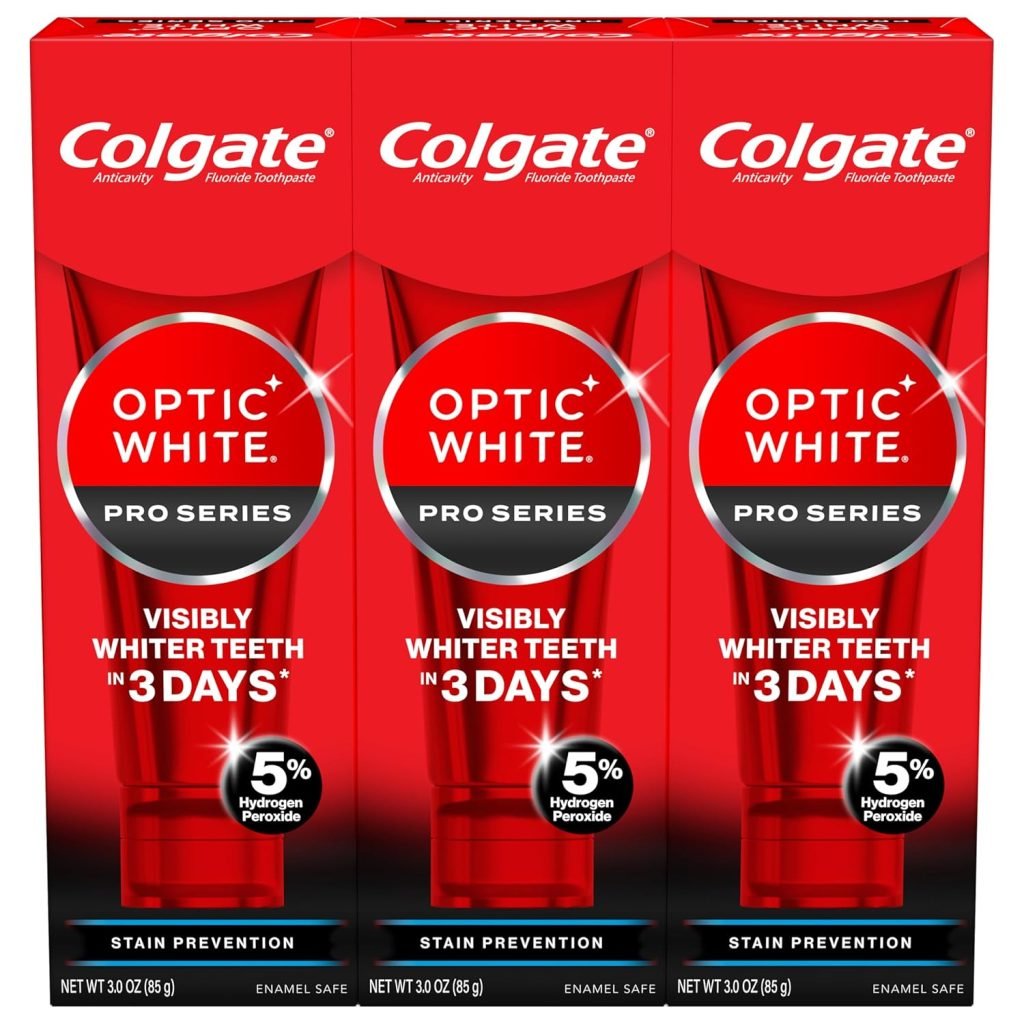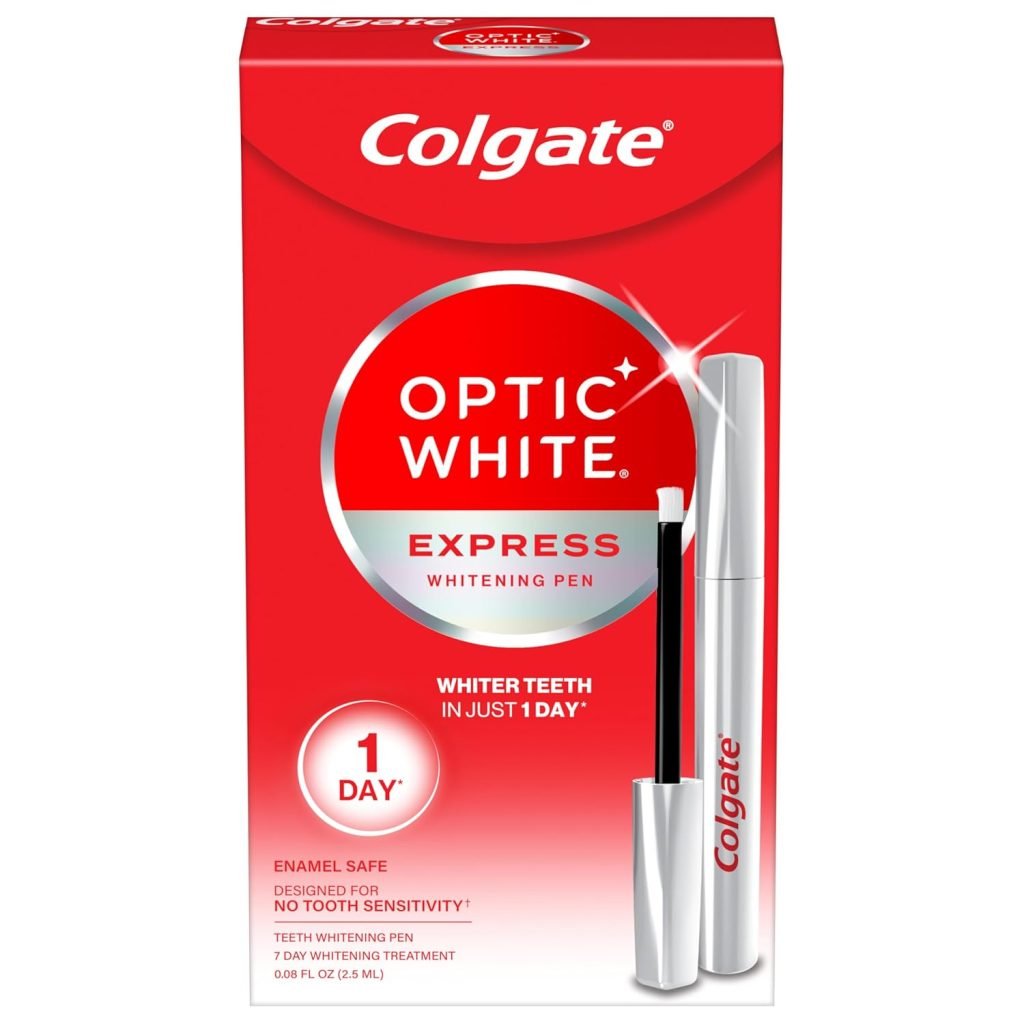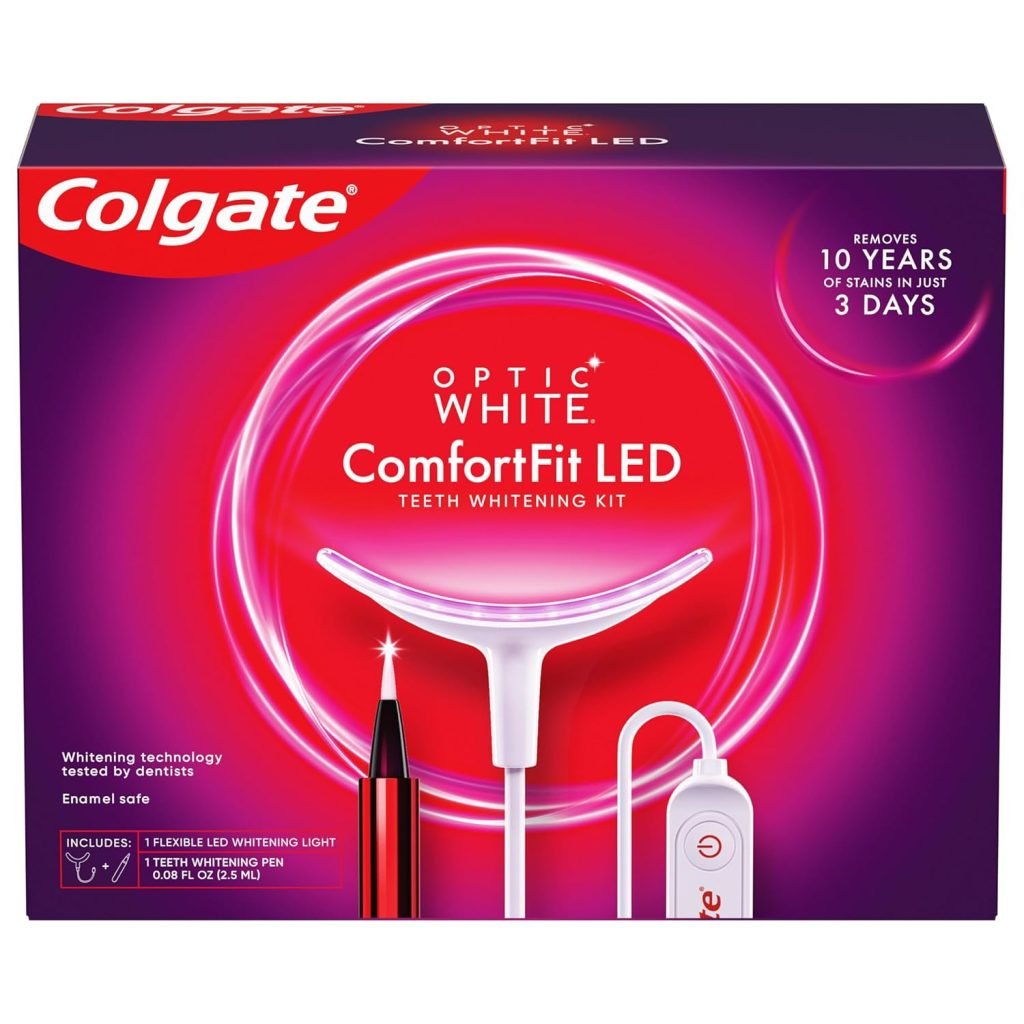Colgate Optic White Product Reviews




In this article
With more people searching for affordable and effective ways to brighten their smiles, at-home teeth whitening solutions have soared in popularity.
Colgate Optic White offers several products: teeth whitening toothpaste, a convenient whitening pen, and a high-tech LED whitening device. Each promises noticeable results.
But how do these options stack up against professional treatments, and which method best suits your needs? Let’s break down the science behind Optic White and help you set realistic expectations.
All Colgate Optic White products use hydrogen peroxide, the gold-standard active ingredient in teeth whitening. Peroxide concentrations vary, impacting whitening speed and intensity:
When applied, hydrogen peroxide breaks down, releasing oxygen that penetrates tooth enamel. This oxygen reaction breaks apart and dissolves yellow and brown stain molecules (chromogens), visibly brightening teeth.
Colgate’s LED whitening device features a violet light (~405 nm), marketed to “amplify” the effects of peroxide. However, research indicates the actual benefits of the LED component are limited:
Get your brightest smile with NewMouth's top teeth whitening picks for 2024.
The NewMouth team put together a list of Colgate’s best Optic White products. Read below for our full review:

Based on our research, the Optic White® Renewal Toothpaste uses a 3 % hydrogen peroxide formula combined with fluoride. It’s designed to remove surface stains like those from coffee, tea, and wine.
Colgate indicates it can tackle up to 15 years' worth of such stains with twice-daily brushing for two weeks while being enamel-safe and containing cavity-fighting fluoride. It’s also been lauded for a gentle, minty flavor.
| Pros | Cons |
| Gentle yet effective 3% hydrogen peroxide formula | Whitening toothpastes aren’t effective on intrinsic stains |
| Fluoride protects against cavities and supports enamel | May not be suitable for sensitive teeth |
| Hydrogen peroxide is a professionally recommended ingredient for teeth whitening | Does not repair long-term enamel damage |
| Smooth mint flavor that doesn’t irritate |

We recommend the Optic White® Advanced Toothpaste for those seeking a reliable daily maintenance option. It delivers a mild 2 % hydrogen peroxide strength, which is enough to remove surface stains over time while remaining enamel-safe.
Users appreciate its everyday wearable strength, affordability, and that it’s still dentist-approved for whitening maintenance.
| Pros | Cons |
| Mild whitening suitable for everyday use | Whitening is gradual; not ideal for quick, dramatic results |
| Contains fluoride to remineralize and protect enamel | May not suffice for deeper, intrinsic stains |
| Budget‑friendly and widely available |

The Optic White® Pro Series Toothpaste is Colgate’s most potent OTC option, containing a 5 % hydrogen peroxide formula. It’s marketed to whiten deeply, with claims of removing up to 15 years of stains when used as directed.
This formula manages to be enamel-safe while also being vegan, gluten- and sugar-free, expanding its appeal to a wider audience.
| Pros | Cons |
| Highest peroxide concentration among OTC Colgate options | Stronger peroxide taste may be off-putting to some |
| Delivers rapid whitening results | Higher price per ounce than milder alternatives |
| Easy to remove (through toothbrushing) | |
| Enamel-safe and allergen-friendly (gluten-free, sugar-free, vegan) |

The Optic White® Express Whitening Pen is a hydrogen peroxide gel in a precision-tip pen. Colgate states it provides visible whitening after just three applications—potentially achieving noticeable results in one day.
The gel is enamel-safe and designed to avoid tooth sensitivity. Users value its precision and convenience, though volume per use is small, and it may tingle slightly.
| Pros | Cons |
| Fast-acting; visible results may appear in as little as one day | Contains only a week’s worth of product at standard usage |
| Portable and precise application | Possible temporary tingling or sensitivity |
| Convenient for on-the-go touch-ups | Whitening effect may be temporary and require repeat application |

The Optic White® ComfortFit LED Kit is a great option if you're after high-impact whitening. This kit includes a flexible LED light device plus a whitening pen containing hydrogen peroxide serum.
The application takes 10 minutes daily, with users reporting an even whitening. While purchasing the kit can be an investment upfront, users appreciate the dentist-tested sensitivity claims and rechargeable flexibility.
| Pros | Cons |
| Combines light technology with whitening gel for potentially faster results | Higher initial cost than standalone pastes or pens |
| Uniform application thanks to LED mouthpiece | Requires daily commitment for full treatment |
| Low sensitivity and rechargeable design | Does not work on dental fixtures (crowns, veneers, fillings, or dentures) |
How Effective is Each Optic White Product?
The effectiveness of Colgate Optic White depends on the product chosen and how consistently it’s used. Here's what you can typically expect:
Other factors influencing your results include stain severity, how strictly you follow the recommended routine, and whether you have existing dental work (like fillings or crowns) that won't whiten with these products.
Teeth whitening, including Colgate Optic White, is generally safe, but being aware of possible side effects helps you use these products responsibly.
Short-term sensitivity is common and typically mild, resulting from peroxide temporarily irritating tooth nerves. Manage this by:
When peroxide contacts gums, mild irritation can occur. Prevent or minimize discomfort by:
Research consistently shows that enamel damage from Colgate Optic White products is minimal, provided they're used correctly:
If you feel the following symptoms, pause the use of teeth whitening products and seek a consultation with your dentist:
See NewMouth’s top 10 teeth whitening products of 2024.
Balancing your specific goals, sensitivity concerns, and budget can help you pick the right teeth whitening method confidently. However, if you’re still unsure which Colgate Optic White product suits you best, we’ve provided a simple breakdown:
Keep in mind that teens, people with significant dental work (crowns, fillings), or severe discoloration should consult dental professionals before starting at-home whitening.local dentist’s office. It has a patented whitening formula and LED device to give people whiter smiles.
In this article